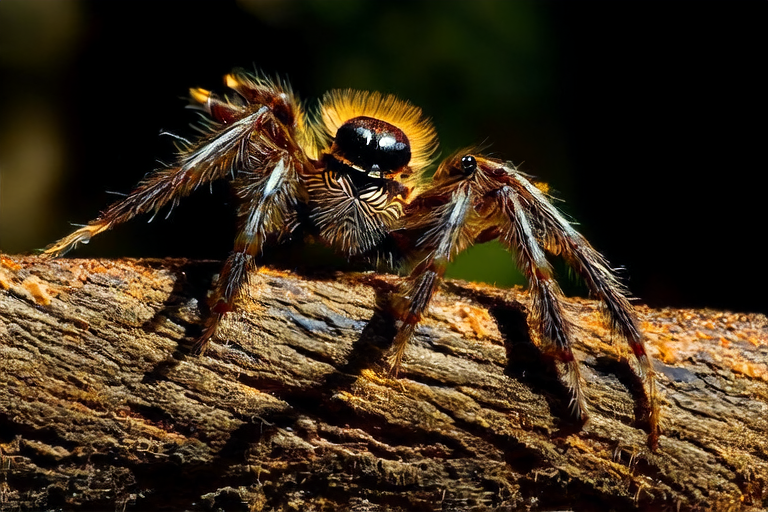From Fear to Fascination: Why Tarantulas Make Unique Pets
Tarantulas have long been misunderstood creatures, often viewed with fear and revulsion. However, these large, hairy spiders are more than just scary arachnids; they are complex, fascinating animals that can make unique and rewarding pets. This article aims to explore the world of tarantulas, dispelling common myths, providing scientific insights, and sharing personal experiences to demonstrate why these arachnids are worth considering as pets.
Scientific Facts About Tarantulas
Tarantulas belong to the family Theraphosidae, which comprises over 900 species distributed across various regions, including tropical forests, deserts, and grasslands. These spiders are known for their impressive size, with some species reaching up to 12 inches in leg span. Despite their intimidating appearance, tarantulas are generally docile and rarely aggressive towards humans. Their primary defense mechanism involves releasing irritating hairs from their abdomen, which can cause discomfort if they come into contact with skin or eyes.
One of the most intriguing aspects of tarantulas is their lifespan. Depending on the species, female tarantulas can live for up to 30 years, while males typically live for around 10 years. This longevity makes them excellent companions for those looking for a long-term pet. Additionally, tarantulas are nocturnal, spending most of their time resting during the day and becoming active at night. They are also solitary animals, preferring to live alone rather than in groups.
Dispelling Common Myths
One of the most prevalent myths about tarantulas is that they are highly venomous and dangerous to humans. While it is true that tarantulas possess venom, it is generally mild and poses little threat to humans. In fact, the venom of most tarantula species is primarily used to subdue prey, such as insects and small vertebrates. The pain caused by a tarantula bite is comparable to a bee sting, and allergic reactions are rare.
Another misconception is that tarantulas are aggressive and will attack without provocation. In reality, tarantulas are quite shy and prefer to avoid confrontation. They will only defend themselves when they feel threatened, usually by attempting to flee or employing their defensive hair release mechanism. This behavior makes them relatively safe pets, especially for beginners.
Care Requirements
Proper care is essential for ensuring the health and well-being of your tarantula. A suitable enclosure is crucial, providing ample space for the spider to move around comfortably. A 10-gallon tank is generally sufficient for most species, although larger enclosures may be necessary for particularly large tarantulas. The enclosure should have a secure lid to prevent escape and should be equipped with a substrate that allows for burrowing, such as coconut fiber or peat moss.
Maintaining the correct temperature and humidity levels is vital for creating an optimal environment. Most tarantulas thrive in temperatures ranging from 75 to 85 degrees Fahrenheit, with humidity levels between 60% and 80%. Providing a shallow water dish and misting the enclosure occasionally can help maintain proper humidity levels. It is important to monitor these conditions regularly, as extreme fluctuations can negatively impact the spider’s health.
Diet is another critical aspect of tarantula care. In the wild, tarantulas are opportunistic predators, feeding on a variety of insects and small animals. As pets, they can be fed appropriately sized crickets, mealworms, and dubia roaches. Feeding frequency depends on the age and size of the tarantula, but generally, they require one or two meals per week. It is important to ensure that any food items are free of pesticides and are appropriately sized to prevent choking.
Unique Behaviors
Tarantulas exhibit several unique behaviors that make them captivating pets. One of the most fascinating is their ability to molt, or shed their exoskeleton, as they grow. During this process, the tarantula will remain still for several days, waiting for its new exoskeleton to harden. This period requires careful observation, as the spider is vulnerable and should not be disturbed.
Another interesting behavior is their use of silk. Tarantulas produce silk from spinnerets located at the end of their abdomen, which they use to create webs for protection, egg sacs, and even to line their burrows. Some species, like the Mexican red-knee tarantula, are known for their elaborate webbing, which adds an aesthetic element to their enclosures.
Social interaction is limited among tarantulas, but they can form bonds with their human caretakers. Many owners report that their tarantulas recognize them and respond positively to regular handling. This bond can be strengthened through gentle, consistent interactions, making tarantulas rewarding companions for those who appreciate their unique qualities.
Experiences and Stories
Many tarantula enthusiasts share stories of how these creatures have become cherished members of their families. One owner recounts the moment their tarantula, named Luna, began to associate her presence with feeding time. After several weeks of consistent handling and feeding, Luna would wave her front legs in anticipation, a behavior that filled the owner with joy and a sense of connection.
Another story highlights the resilience and adaptability of tarantulas. An owner had to relocate due to unforeseen circumstances, taking their tarantula along with them. Despite the stress of moving, the tarantula adjusted quickly to the new environment and continued to thrive. This experience underscored the importance of providing a stable and comfortable home for these sensitive creatures.
Conclusion
From Fear to Fascination: Why Tarantulas Make Unique Pets offers a comprehensive look at these often-misunderstood creatures. By understanding the scientific facts, dispelling common myths, and learning about their care requirements and unique behaviors, potential owners can gain a deeper appreciation for tarantulas as pets. Whether you are a seasoned exotic animal enthusiast or simply curious about the world of spiders, tarantulas offer a fascinating glimpse into the lives of these remarkable arachnids.
Ultimately, tarantulas are more than just pets; they are ambassadors for a group of animals that deserve greater respect and understanding. By choosing to keep a tarantula as a pet, you are not only gaining a unique companion but also contributing to the conservation and appreciation of these incredible creatures.
